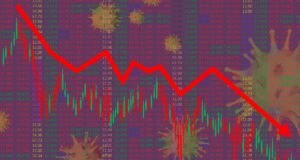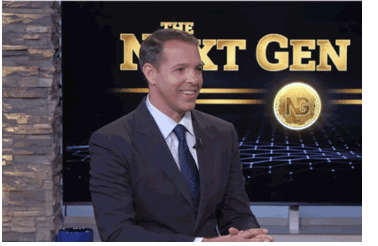Stocks ticked lower this morning as markets react to growing tension between the U.S. and China over House Speaker Nancy Pelosi’s trip to Taiwan. “We would like to tell the United States once again that China is standing by, the Chinese People Liberation Army will never sit idly by, and China will take resolute responses and strong countermeasures to defend its sovereignty and territorial integrity,” Chinese foreign ministry spokesman Zhao Lijian said Monday in a daily briefing.
The downward move came after a losing first session of August, leading many on Wall Street to wonder if July’s strength is sustainable. “We are seeing a relief rally in the stock market, as pessimism reached extreme levels, and as longer-term interest rates have been coming back down,” said Chris Zaccarelli, chief investment officer for Independent Advisor Alliance. “…As stock prices rebound and it becomes increasingly clear that we are headed for a more typical recession (e.g., one with higher unemployment and nominal GDP dropping close to zero or negative), markets will again have another selloff,” said Chris Zaccarelli, chief investment officer for Independent Advisor Alliance.
Today we’ll discuss a short-term play that allows shareholders to benefit from backslides in the market. This valuable tactic can be used as a hedge and also to generate quick profit when things take a turn. Unlike short-selling, the risk associated with this tactic is limited, in theory making it a safer option.
Traders who are looking to benefit from sliding stocks often turn to short-selling. The main risk of traditional short-selling is that while profit is capped (a stock can only fall to zero), the risk is theoretically unlimited. Of course, other tactics can be used to cover a position at any time, but with a short-selling position, inventors risk receiving margin calls on their trading account if their short position moves against them.
Inverse or “short” ETFs are another option that allows you to profit when a particular investment class declines in value. Some investors use inverse ETFs to profit from market declines, while others use them to hedge their portfolios against falling prices.
Over short periods, you can expect that the inverse ETF will perform “the opposite” of the index, but a disconnect may develop over more extended periods. Inverse ETFs will decline as an asset appreciates over time. For that reason, inverse ETFs typically are not seen as suitable long-term investments. Furthermore, frequent trading often increases fund expenses, and some inverse ETFs have expense ratios of 1% or more.
Inverse ETFs can be excellent day-trading candidates and highly effective short-term hedging tools when approached correctly. There are several inverse ETFs that can be used to profit from declines in broad market indexes, such as the Russell 2000 or the Nasdaq 100. Also, there are inverse ETFs that focus on specific sectors, such as financials, energy, or consumer staples.
With $4 billion in assets, the ProShares Short S&P 500 (SH) is the largest inverse fund by value. Commonly used by investors as a hedging vehicle, the fund strives to deliver the inverse performance of the S&P 500 (SPX). If you’re concerned about the stock market falling, this is the fund that moves in the opposite direction of the largest 500 U.S. corporations and is the simplest way to protect yourself.
It’s important to note that SH is designed to deliver inverse results over a single trading session, with exposure resetting monthly. Investors considering this ETF should understand how that nuance impacts the risk/return profile and realize the potential for “return erosion” in volatile markets. SH should definitely not be found in a long-term, buy-and-hold portfolio. The fund comes along with an expense ratio of 0.9%.
Where to invest $1,000 right now...
Before you consider buying SH, you'll want to see this.
Investing legend, Keith Kohl just revealed his #1 stock for 2022...
And it's not SH.
Jeff Bezos, Peter Thiel, and the Rockefellers are betting a colossal nine figures on this tiny company that trades publicly for $5.
Keith say’s he thinks investors will be able to turn a small $50 stake into $150,000.
Find that to be extraordinary?
Click here to watch his presentation, and decide for yourself...
But you have to act now, because a catalyst coming in a few weeks is set to take this company mainstream... And by then, it could be too late.
Click here to find out the name and ticker of Keith's #1 pick...





